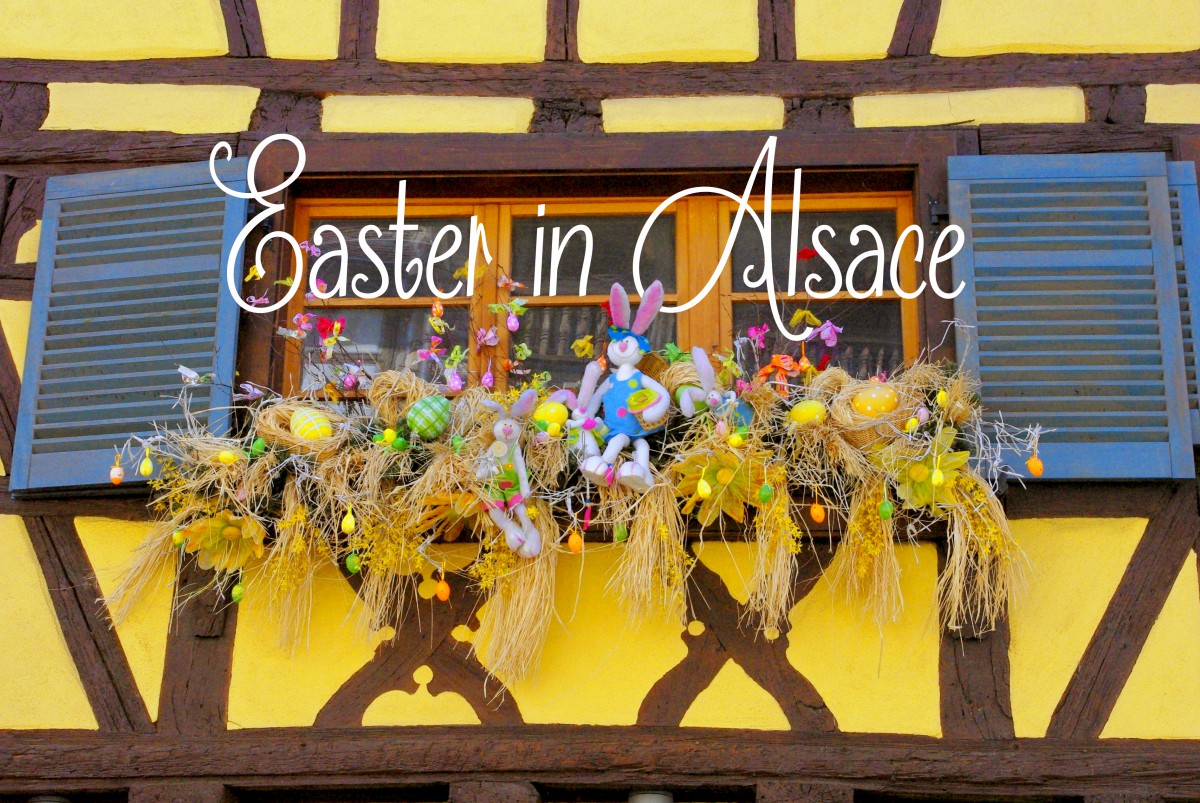Spending Easter in Alsace is unforgettable! The first rays of sunshine touching the land of Alsace herald spring and Easter, a period of celebration in the French region close to the German border. Around Easter, the white stork, a symbol of fertility, is back and can be seen perched high above the village squares atop the chimneys and rooftops. In Alsace, Easter is considered the most important celebration after Christmas. Under the influence of Germany, people from Alsace have kept unique Easter traditions that cannot be found elsewhere in France. Watch out: the Easter Hare is coming to town!
Watch our short video explaining Easter in France:
The Holy Week in Alsace

The ‘Holy Week’ (Semaine Sainte) leading to Easter starts with Palm Sunday (dimanche des rameaux). The celebration commemorates Jesus’ entry into Jerusalem, where the crowd scattered palm branches before Jesus. In many Catholic churches, the priest blesses branches of yew, representing the palms carried by the people of Jerusalem. A procession follows the mass in the streets of the parishioners holding the yew. The branches will be placed in their home in anticipation of Easter.
In Alsace, the Holy Week is the time for a thorough spring cleaning, locally known as “Oschterputz” (literally ‘Easter dust’). Everything is cleaned up, from inside to outside the houses, the streets…
Organised each year, “Haut-Rhin Propre” is an extensive clean-up operation launched in the département of Haut-Rhin near Easter, where the local councils, children and volunteers pick up the rubbish left in their natural environment.
The whole week is also dedicated to colouring the eggs and preparing the traditional pâtisseries.
On Good Thursday, the bells fall silent. The children are told to go to Rome to be blessed by the Pope. They will be back on Easter Sunday to announce Jesus Christ’s resurrection.
Easter Decorations in Alsace
People from Alsace decorate their houses before Easter. Branches are set up with painted eggs, spring flowers and little figurines hanging beautifully in the windows or the centre of a table.
Easter decorations can be admired in many of the villages along the Alsace Wine Route: Kaysersberg, Ribeauvillé, Riquewihr or Eguisheim. The colourful half-timbered houses are decorated with floral window boxes filled with Easter ornaments that give the village or town a festive look.

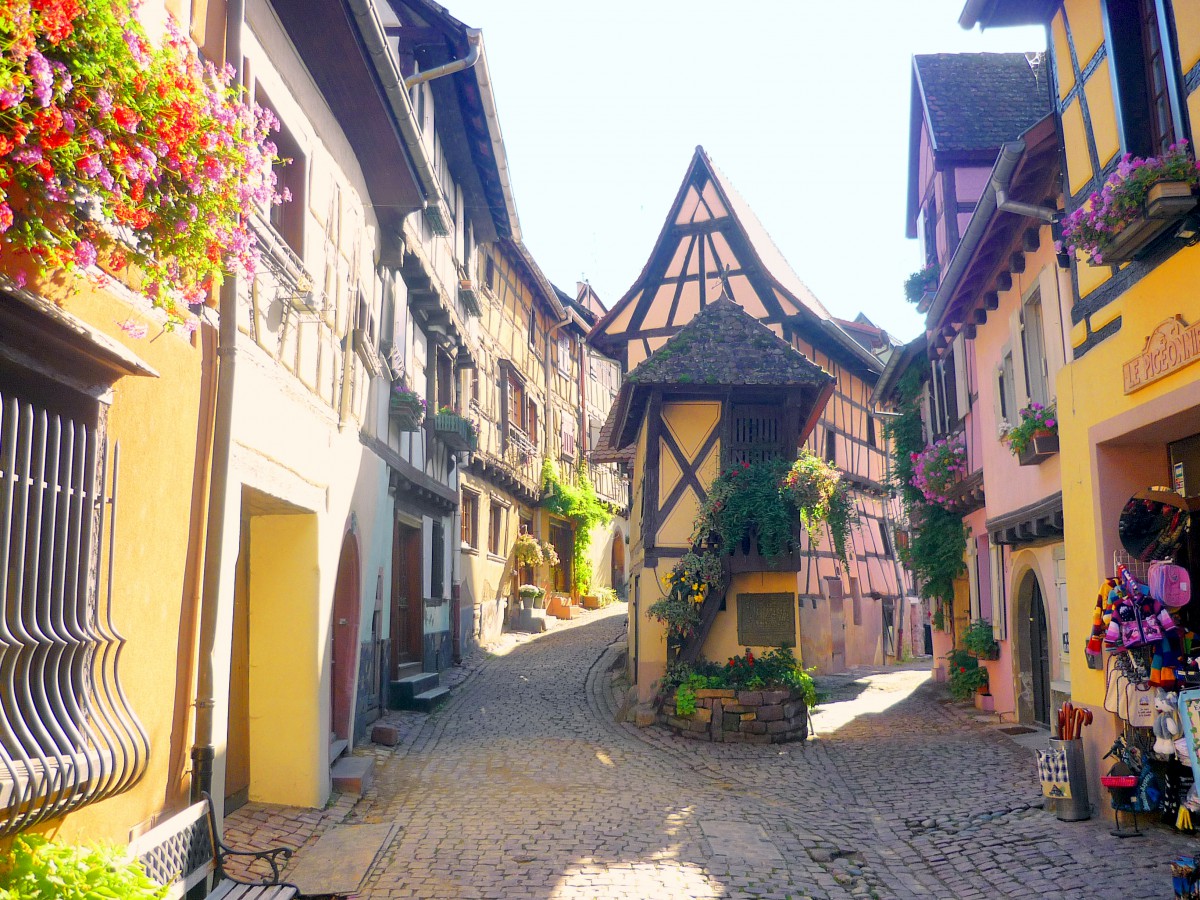


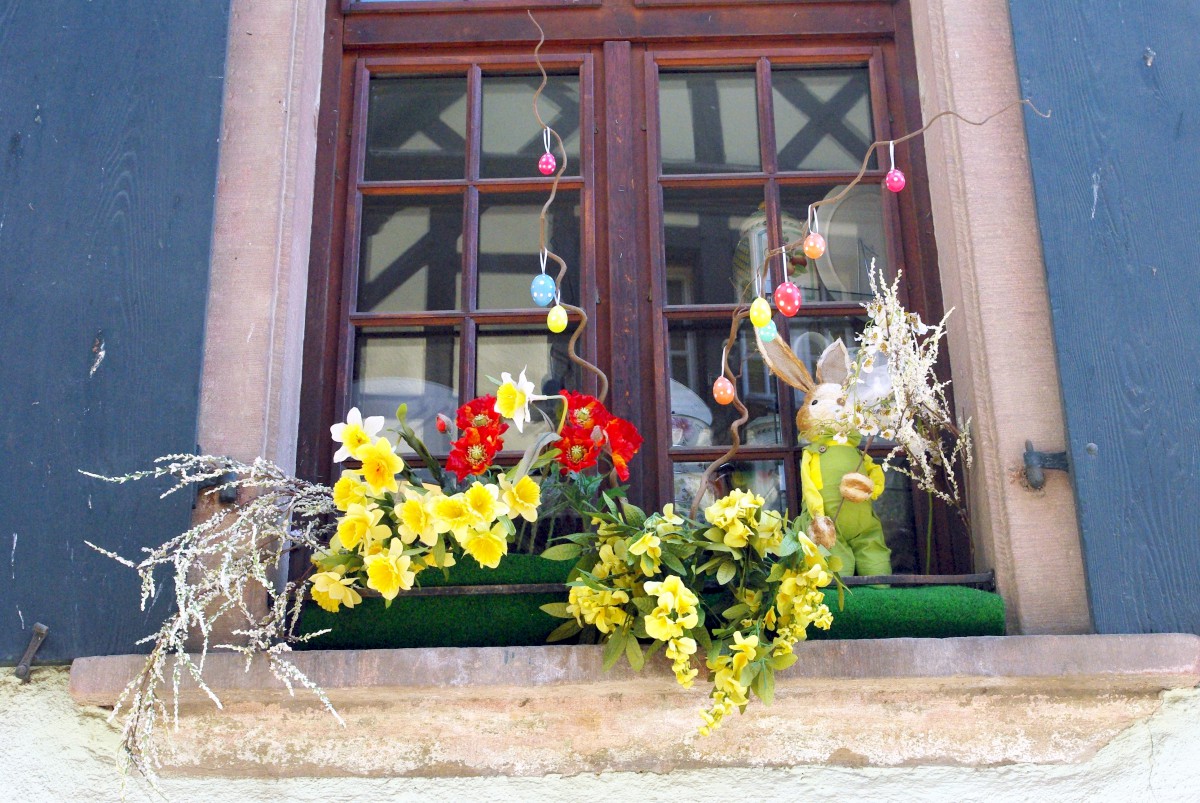
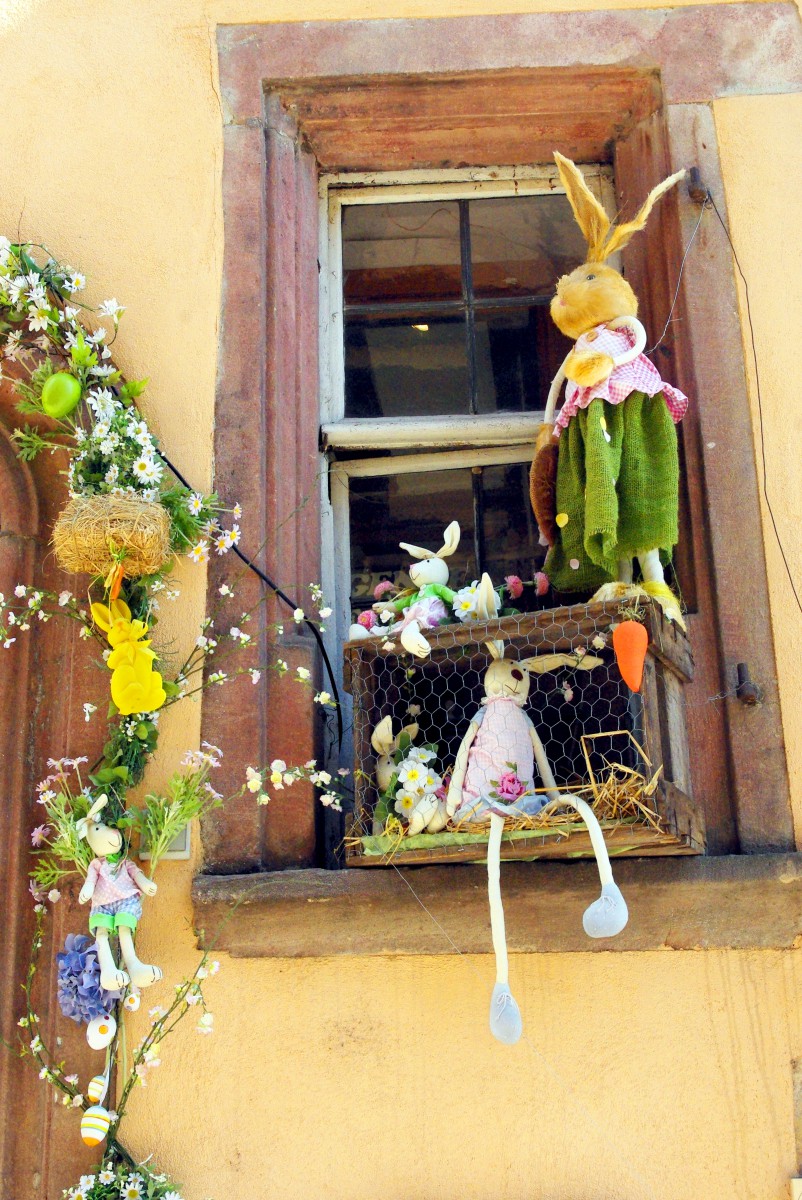
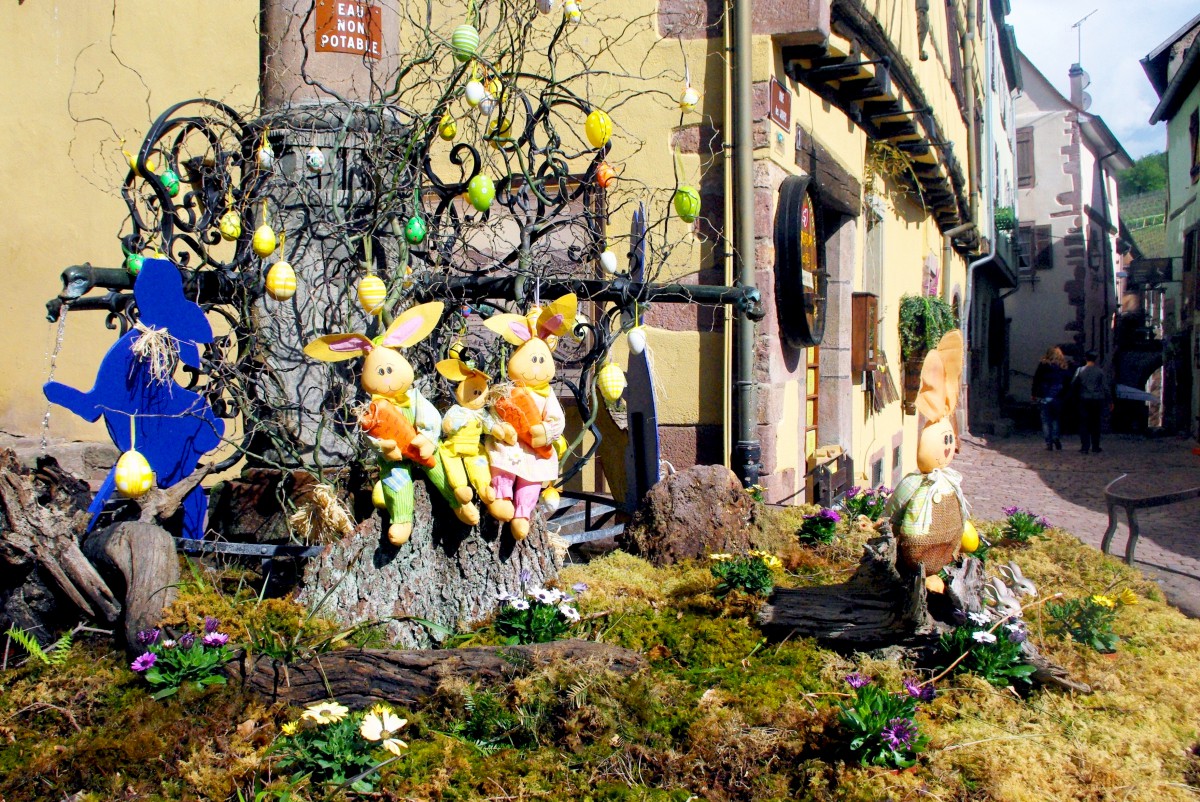
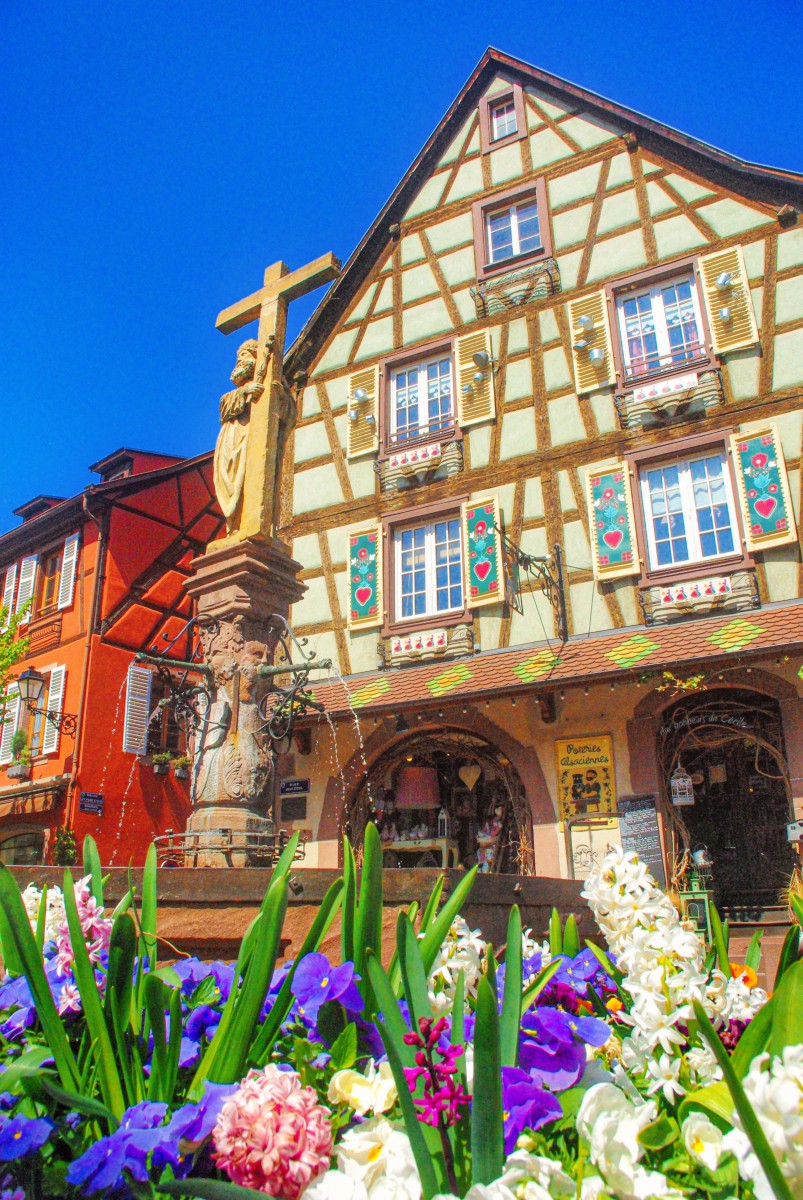
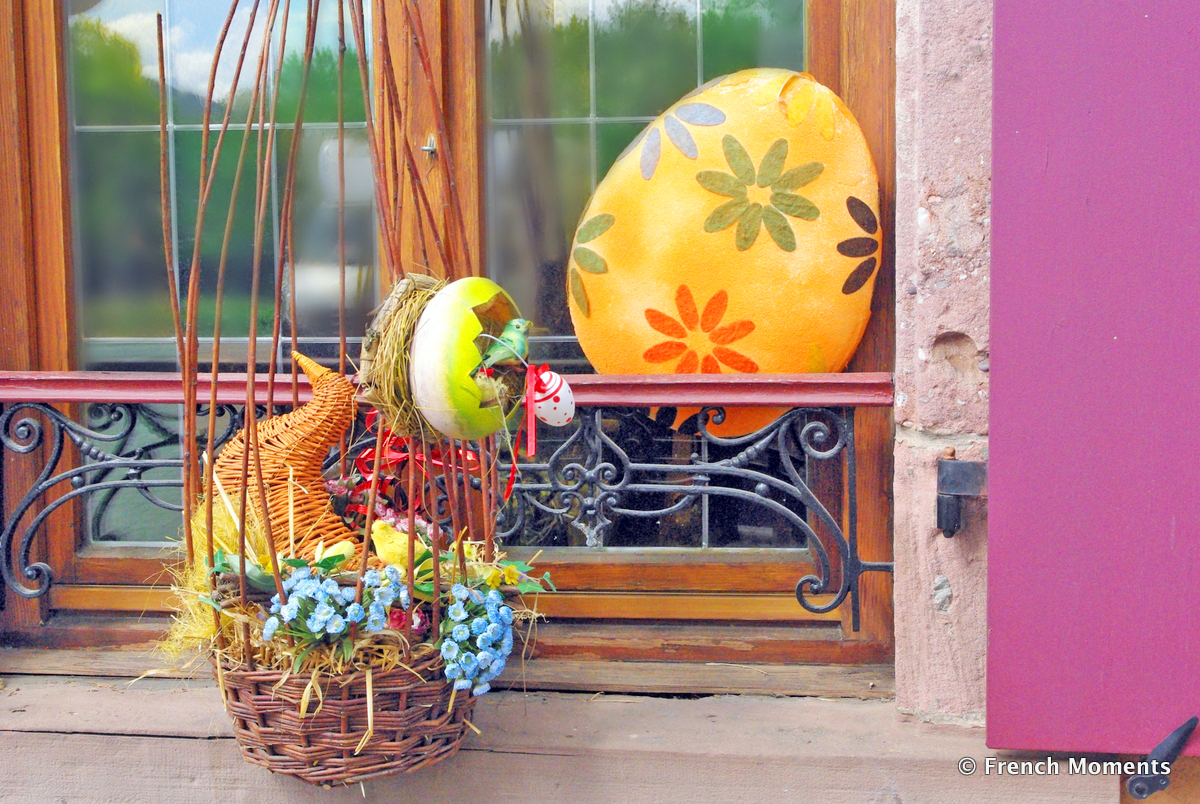

Easter Hare
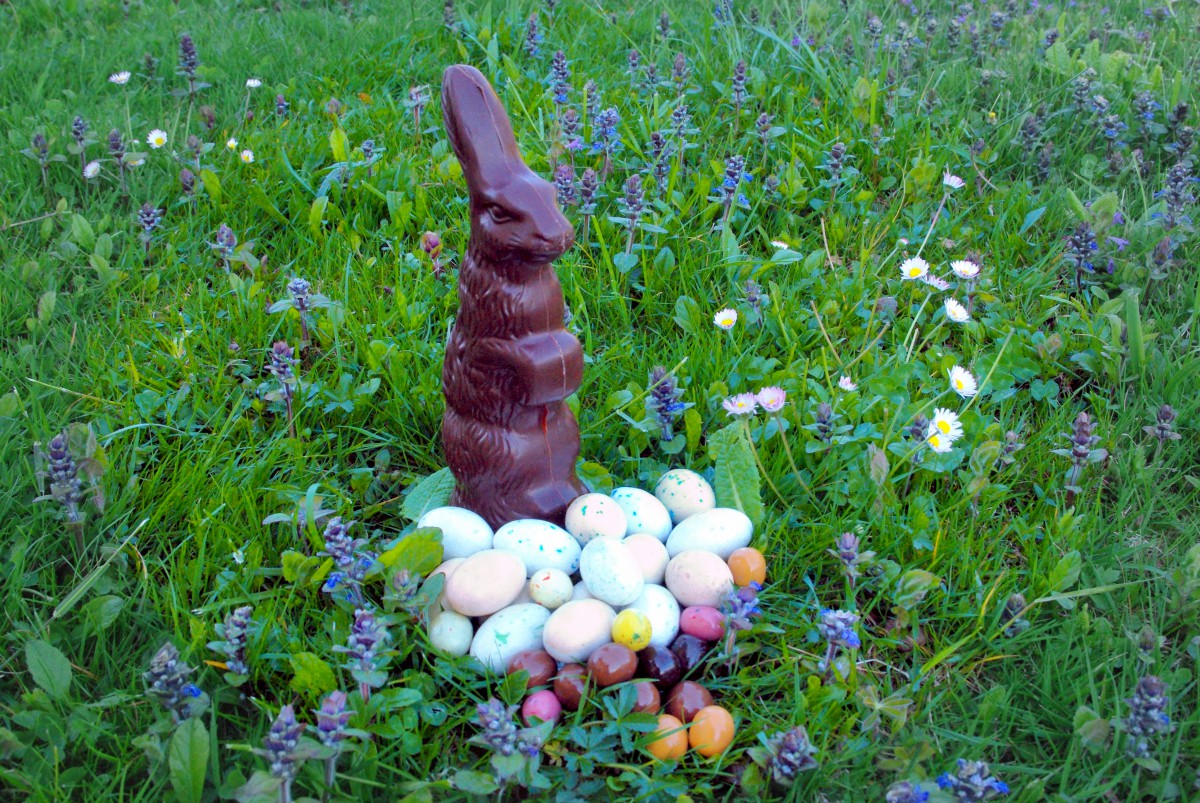
Children create nests with leaves, moss or grass, which they place in the garden, hoping to be filled with multi-coloured (and chocolate) eggs during the night. Unlike in France, the bells are not the chosen ones to distribute the eggs. Like in Germany, this important task is given to the Easter Hare (der Osterhase). On the night before Easter, the Easter Hare puts baskets filled with eggs and candy in the children’s nest or hides them in the house or garden. The children will go on an exciting egg hunt when they wake up on Easter morning.
The first written mention of the Easter Hare tradition in the Upper Rhine dates back to 1682. In “De obis paschalibus” (About the Easter Egg), Georg Franck von Frankenau refers to the tradition of the distribution of eggs by the Easter Hare and the negative impact of eating too many eggs!

The only exception to the Easter Hare tradition in Alsace is the Valley of Munster, where the white stork is believed to bring the Easter eggs to the children. The white stork is the emblematic bird of Alsace and comes back to the region in spring after having spent most of the winter in warmer climates.
Easter Markets in Alsace
Many towns and villages hold an Easter market, similar to the famous Alsatian Christmas markets but smaller. In Colmar, the market is found on two of the city’s historic sites: Place des Dominicains and Place de l’Ancienne Douane.

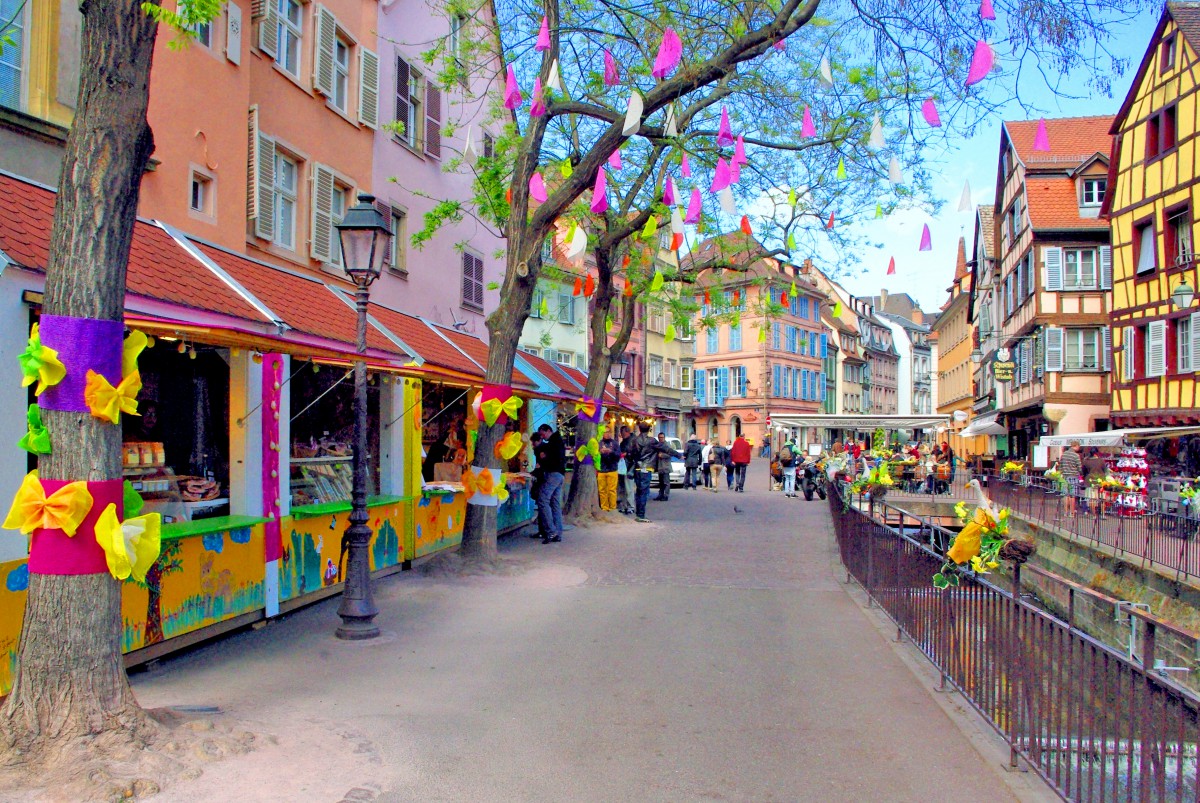
The markets invite visitors to discover original and authentic products from craftsmen which have been carefully selected. Children will be delighted to meet farm animals (rabbits, goats, ducks, and birds) in enclosures by the stalls.
Easter in Alsace: events
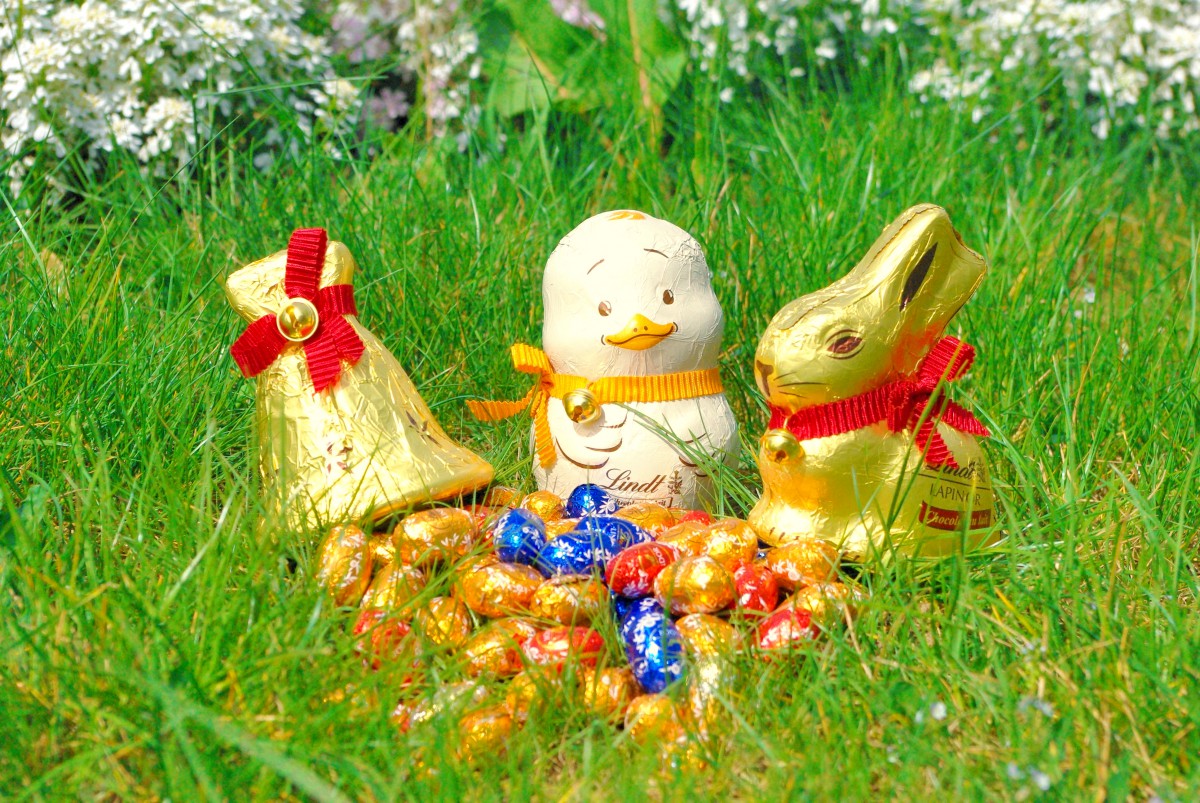
In Alsace and the Lorraine département of Moselle, Good Friday (le vendredi Saint) is a bank holiday unlike elsewhere in France. The region hosts many other events, such as decorated egg exhibitions, concerts, giant Easter egg hunts, and interactive Easter workshops, without forgetting Passion Plays, such as in Masevaux.
Easter Lamb: the Lammala
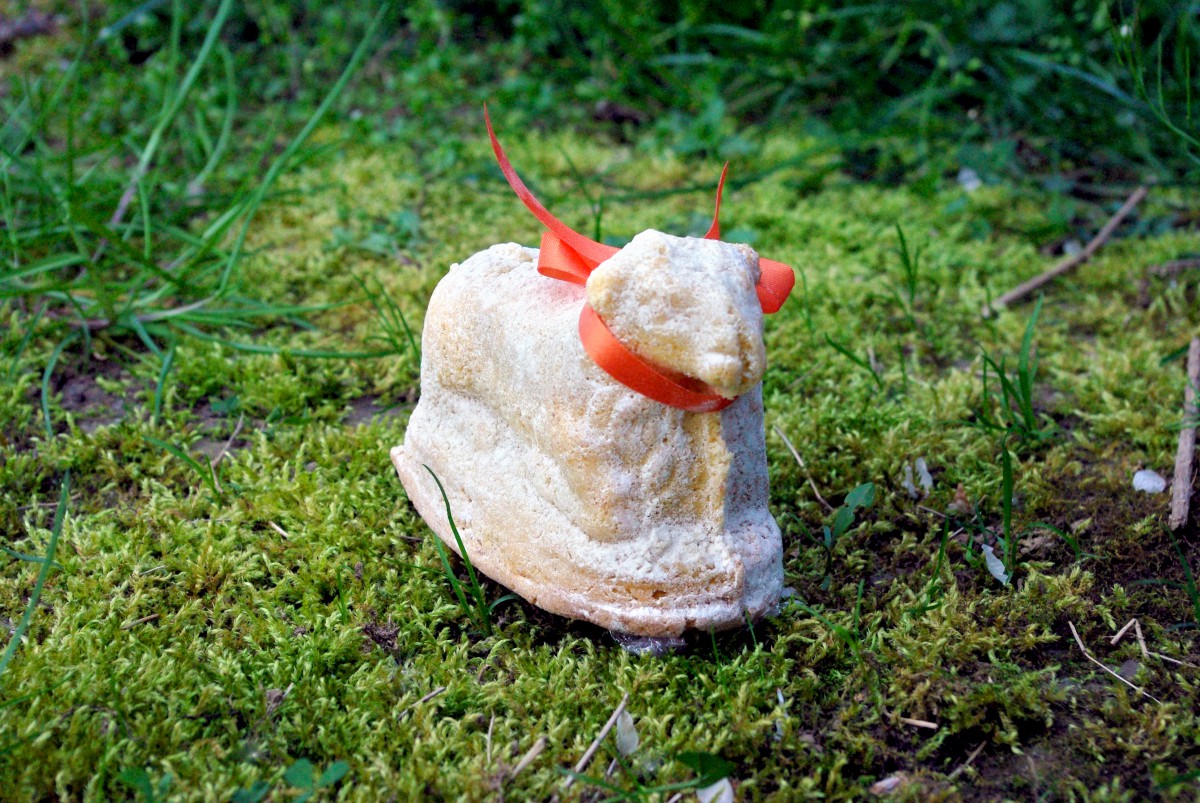
The biscuit baked in a traditional pottery mould in the shape of a lamb is also pronounced “lammala”, “lémela”, “lamella”, “Oschterlammele”, or “osterlämmele”. The French call it “Agneau pascal”.
This gênoise biscuit sprinkled with icing sugar symbolises purity and innocence and refers to Jesus, the Lamb of God sacrificed on the cross.
The Lammala is elegantly attired with a ribbon around its neck and can be found everywhere in Alsace, from supermarkets to grocery stores. The best Lamalas are those from reputed boulangeries-pâtisseries, such as Pâtisserie Gilg in Munster.
Easter in Alsace: English-French Vocabulary

(f) for féminin, (m) for masculin, (adj) for adjective and (v) for verbs
- bell = cloche (f)
- bunny = lapin (m)
- to celebrate = célébrer (v)
- chocolate = chocolat (m)
- to decorate = décorer (v)
- decoration = décoration (f)
- Easter = Pâques (f)
- Easter in Alsace = Pâques en Alsace
- Easter Market = Marché de Pâques (m)
- egg = œuf (m)
- egg hunt = chasse aux œufs (f)
- Germany = Allemagne (f)
- Good Friday = Vendredi Saint (m)
- Good Thursday = Jeudi saint (m)
- half-timbered house = maison à colombages (f)
- hare = lièvre (m)
- Holy Week = Semaine Sainte (f)
- Jesus = Jésus
- lamb = agneau (m)
- market = marché (m)
- mass = messe (f)
- nest = nid (m)
- Palm Sunday = dimanche des rameaux (m)
- parishioner = paroissien (m)
- pope = pape (m)
- spring = printemps (m)
- Spring clean-up = nettoyage de printemps (m)
- stork = cigogne (f)
- Sunday = dimanche (m)
- tradition = tradition (f)
- Upper Rhine = Rhin Supérieur (m)
- village = village (m)
- yew = buis (m)

Find out more about Easter traditions in France.

